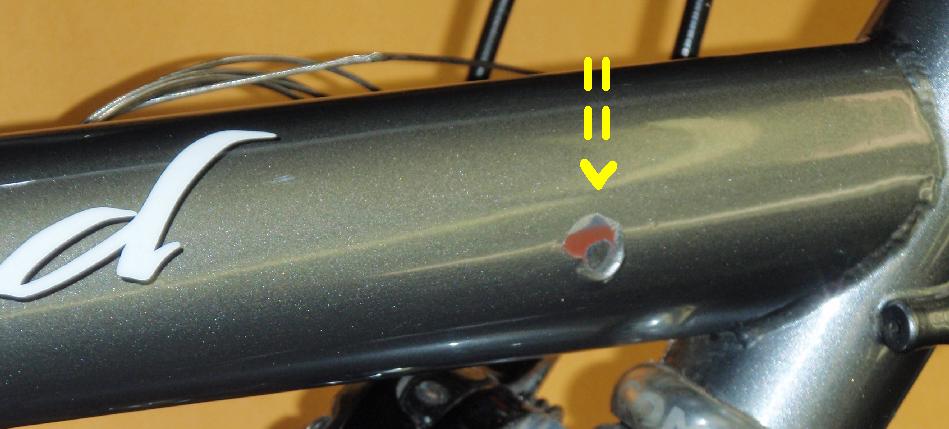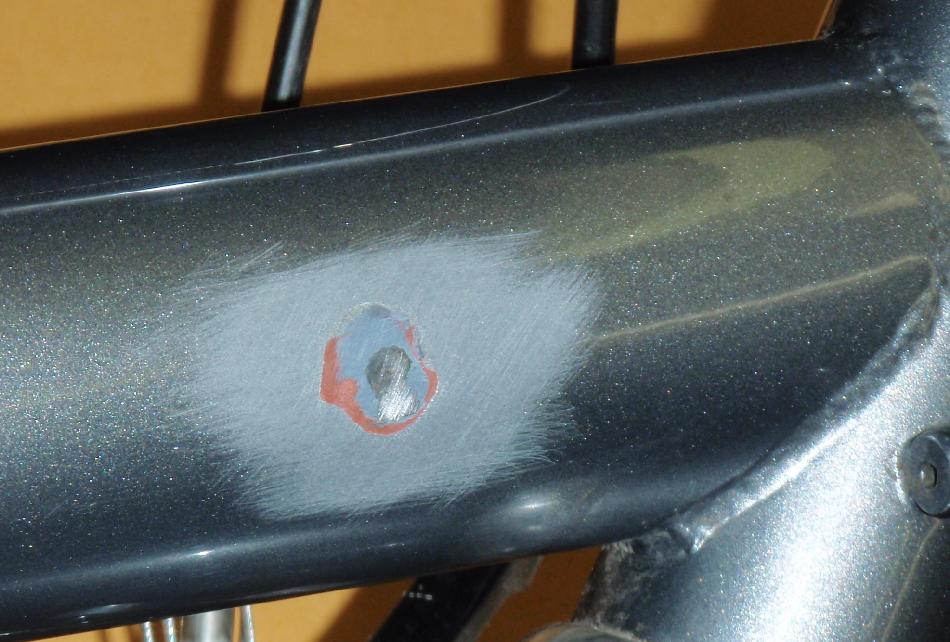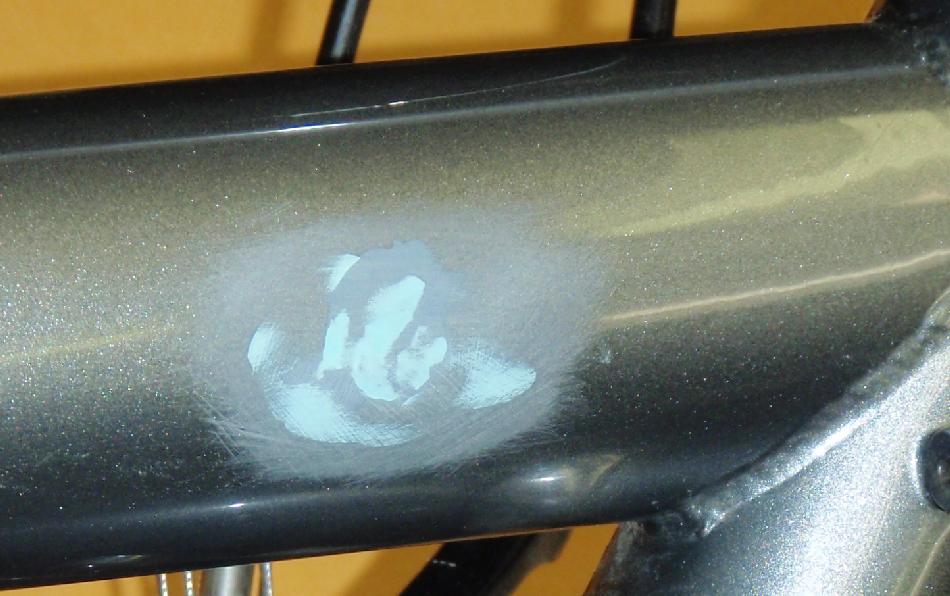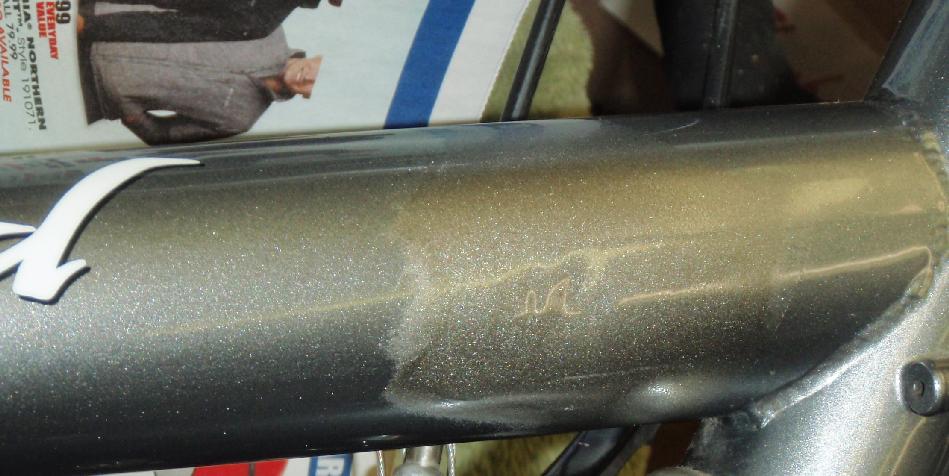| Factory touchup paint is available for most of the bikes we sell and for many we carried in the past. For some colors, such as gloss black, the brand and color match are not at all important. For some, the factory paint will be a very good match. For others, especially translucents, flamboyants, pearls, and all whites and off-whites, the color match will be poor. Factories use large-scale automatic painting systems that are designed to set quickly, avoid waste (due to environmental regulation), cover in one pass, and spray uniformly with minimal use of solvents (again, for environmental regulations). None of the modern factory paint materials are suitable for application in the home. Modern touchups are approximations formulated by paint-matching companies (like Dupli-Color and Lubri-Tech) to be close to the original dye or pigment specification. In addition, your bike may well have sun-faded, absorbed oil stains, or reacted with waxes or polishes since it was new. For all of these reasons, 'original color' touchup paint may not be an EXACT color match. A good alternate is nail polish which is high quality, available in an amazing range of colors, ubiqiuitous and dirt cheap.
Proper application of touchup paint is the same as automobile touchup: 1 Remove any parts or accessories from the area of paint damage. Remove any grease, oil or wax from the damaged area with a volatile solvent such as lacquer thinner, trichlorethylene, acetone or alcohol. The solvent you use must evaporate cleanly and not leave a residue. 2 Sand the chipped area with fine sandpaper of grade 400 or higher. This cleans the metal and blends the contour of the chip so there is no discernable edge from metal to paint. Use light pressure with rapid strokes, changing direction frequently, to blend smoothly. Wet sanding by dripping tepid water across the work whilst sanding will speed the work and give a smoother finish. 3 Treat the metal with a metal conditioner. Metal conditioners have a mild acid (usually phosphoric acid) to clean the surface of oxides and texture the surface to accept the primer. This is also called etching. Follow directions carefully noting the conditioner should be applied wet, wiped dry and not allowed to air-dry (which would leave salt deposits on the metal). Primer should be applied as soon as possible after metal treatment. 4 Primer the area with a paint-on or spray primer. Primers are formulated to bond well to the surface and seal the metal from moisture. The primer is important because the paint will not bond well to bare steel or aluminum. Primer also fills slightly so the surface is nearer the same height as the surrounding area. 5 After the primer is dry, scuff-sand the primer surface using a fine sandpaper of grade 400 or higher. Use light pressure to avoid sand scratches and/or sanding through the primer. If required, apply a second coat of primer and repeat sanding. Wet sanding again will leave a smoother finish. 6 Apply the color as thinly as possible. With opaque dark colors one coat will probably do. For lighter, translucent or pearl colors, multiple coats may be necessary to duplicate the factory finish. Many translucent, pearl, flamboyant, and neon finishes require a base coat of white or silver to refract properly through the paint for a good color match. 7 If the color is not smooth after drying, a light scuff sanding or wet sanding will help, followed by another color coat. Ensure the paint is exactly the way you want it to look before proceeding. 8 Clear is sometimes added over color coats to bring up gloss and blend the surface. Clear will not make a poor finish good but it can make a good finish better. If the surface of the paint is rough, don't bother to add a clear over it - fix the paint first!. 9 After complete drying, usually a few days of warm and dry conditions, wax the finish. Suitable waxes are pure carnauba type waxes. Avoid automotive products which have "grit", "cutter", "polish", or "buffer" on the label. They will remove paint. | 






